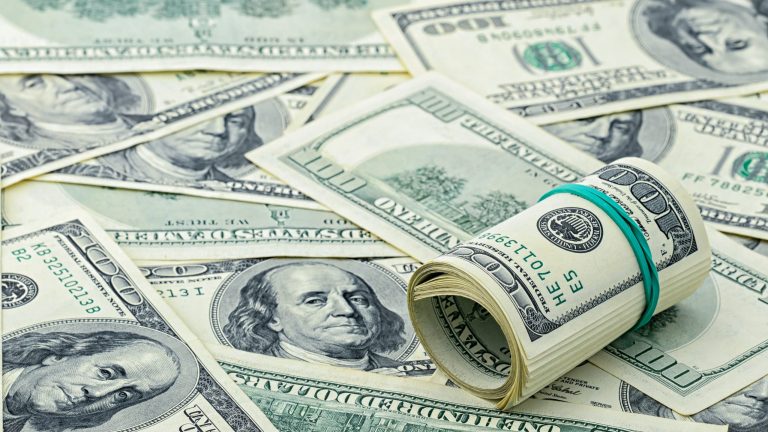The US dollar on Tuesday reached a peak not seen in over two months against several major currencies, driven by increasing speculation that the Federal Reserve will implement moderate rate cuts soon.
Concurrently, the yen inched closer to the critical threshold of 150 per dollar.
In early Asian trading, the euro remained stable but lingered near its lowest point since August 8, which it hit on Monday.
This comes just ahead of the European Central Bank’s policy meeting scheduled for Thursday, where expectations lean toward another interest rate reduction.
Recent US economic indicators suggest resilience, with a modest slowdown observed.
Additionally, inflation for September exceeded predictions slightly, prompting traders to reduce their forecasts for significant rate cuts by the Fed.
The Federal Reserve initiated its easing cycle with an aggressive 50 basis points reduction during its September meeting.
Currently, market expectations suggest an 89% likelihood of a 25 basis points cut in November, with 45 basis points of total easing anticipated for the remainder of the year.
The dollar index, which gauges the currency’s performance against six others, was last recorded at 103.18, just below the 103.36 peak reached on Monday—its highest since August 8.
The index has gained 2.5% and appears poised to end a three-month decline.
A boost for the dollar came after remarks from Fed Governor Christopher Waller on Monday, who urged a cautious approach to future interest rate cuts, referencing the latest economic data.
Waller stated, “Whatever happens in the near term, my baseline still calls for reducing the policy rate gradually over the next year.”
Waller also noted that recent hurricanes and a strike at Boeing could complicate job market data, potentially lowering October’s monthly job gains by more than 100,000.
The next non-farm payrolls (NFP) report is scheduled for early November.
Chris Weston, head of research at Pepperstone, remarked:
Most knew that recent disruptions would result in the NFP print being a messy affair, but Waller’s comment goes some way in quantifying the sort of disruption we can expect. Essentially, with the next NFP so distorted, the market won’t have the same level of control in pricing risk into the November FOMC meeting.
The dollar’s recent ascent has negatively impacted the yen, especially following a dovish pivot from Bank of Japan Governor Kazuo Ueda and unexpected resistance to further rate hikes from new Prime Minister Shigeru Ishiba.
These developments have raised questions about the timing of future policy tightening by Japan’s central bank.
In early trading, the yen was valued at 149.55 per dollar, having reached a 2.5-month high of 149.98 on Monday, a day when Japan was closed for a holiday.
The last instance of the yen hitting the 150 level was on August 1.
The Australian dollar remained steady at $0.67275, while the New Zealand dollar dipped 0.13% to $0.6089. The euro was last quoted at $1.090825.
Meanwhile, the offshore yuan in China showed little movement at 7.0935 per dollar, following a report by Caixin Global indicating that China might issue an additional 6 trillion yuan (approximately $850 billion) in Treasury bonds over the next three years to stimulate its sluggish economy.
Tony Sycamore, a market analyst at IG, noted that market sentiment is shifting toward the expectation of fresh stimulus measures, potentially to be discussed at the China National People’s Congress standing committee meeting later this month.
The post Dollar hits two-month high as yen nears 150/$ amid rate cut speculation appeared first on Invezz

